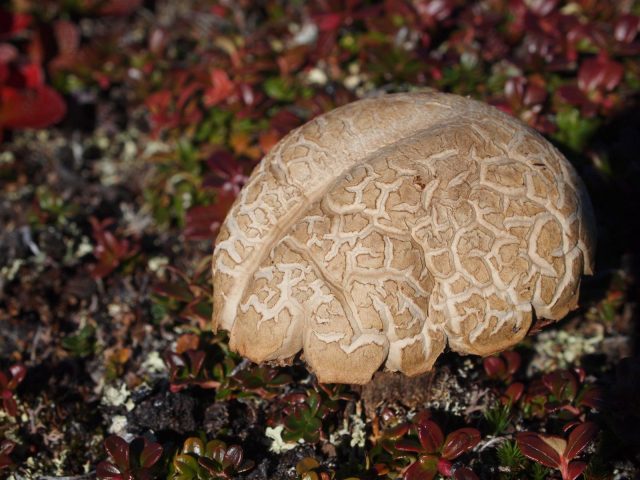What if Alzheimer’s disease was caused by fungi?
More than a hundred years have passed since the German physicist Alois Alzheimer associated the traits of dementia of one of her patients with morphological changes in her brain after her death. While we know a great deal about what today is known as Alzheimer’s disease, we still need to answer two fundamental questions: what causes it and how can we cure it.

Alzheimer’s disease is characterized by dementia and loss of cognitive abilities associated with neuronal death and the presence in the brain of two distinctive structures that arise from aggregated proteins: neurofibrillary tangles and amyloid plaques. The tangles are located inside the neurons and mainly contain a modified form of a protein called tau, whereas the amyloid plaques are extracellular and are constituted by aggregates of β-amyloid peptides that result from the incorrect cleavage of a protein called APP. However, it has been difficult to establish clear cause and effect relationships between these structures and the clinical symptoms, as well as the sequence of events that drive the disease.
The current model assumes that the formation of the amyloid deposits is what triggers the disease. Laboratory animals that overexpress APP and β-amyloid peptides show progressive formation of amyloid plaques in the brain as the animal grows older. However, these animals usually don’t display neuronal loss or tau aggregation and thus seem to mimic the early stages of the disease. In humans, the accumulation of amyloid plaques is believed to promote the aggregation of tau. Since tau is normally associated with microtubules, which are a sort of ‘railroads’ of the cell, the formation of neurofibrillary tangles disrupts the neuron’s transport system and, eventually, this could lead to neuronal loss.
As for the causes of the disease, they remain largely unknown. Patients harbouring mutations on the APP gene or in genes that codify for proteins involved in its cleavage, termed presenilins 1 and 2, are more likely to develop the disease, but this accounts for less than 1% of the cases. Inheriting a specific form of the apolipoprotein E is the best-described risk factor to date. About 50% of individuals with Alzheimer’s carry this form, but the role of the protein is not clear.
But despite all the knowledge accumulated about the disease, the therapies based on this paradigm have proven ineffective and there is no clear evidence that targeting β-amyloid halts the progression of the disease. This has prompted some research groups to look at Alzheimer’s disease from completely different angles.
Fungus among us
In a recent paper published in Scientific Reports1, Spanish researchers analysed the brains from eleven Alzheimer’s patients and detected fungal infections in all of them. The detection was achieved in human samples using two different techniques: immunohistochemistry and PCR. In the former, the brain sections were incubated with serum from rabbits in which inactive fungal particles had been previously inoculated to generate antibodies against them. These antibodies were then bound to fluorescent markers and detected using a confocal microscope. For the PCR detection, DNA was extracted from the brains and then specific fungal sequences were amplified, taking precautions to prevent contamination during the procedure.
The authors detected fungal cells and hyphae both inside and outside neurons from different brain regions and in the neurovascular system. This last observation is interesting because most Alzheimer’s patients show some kind of cerebrovascular pathology. There was evidence of infection of different species, including several types from the Candida genus, but without a clear pattern. Conversely, none of the ten brains from control individuals analysed was infected.
Since these analyses are made in post-mortem tissue, it is impossible to know if the fungal infections are the consequence of a compromised immunological system or a cause of the disease. It is also not clear the link between the fungi and other characteristic features of the disease, such as amyloid plaques and neurofibrillary tangles. The authors cite other works that imply that chitin-like polysaccharides could be involved in the formation of the amyloid plaques, and suggest that this chitin could be of fungal origin. Also, β-amyloid peptides are known to have antimicrobial activity, particularly against one of the species detected, Candida albicans. Hence, it is possible that a fungal infection could induce an immune response that increases β-amyloid and triggers the amylogenic cascade and the onset of the disease. Interestingly, a previous report shows that an antifungal treatment proved beneficial in two patients. Further work is required to validate these hypotheses and to elucidate if these microorganisms play a primary role in the disease or are just another piece of a very complicated puzzle.
References
- Pisa, D., Alonso, R., Rábano, A., Rodal, I. & Carrasco, L. (2015). Different brain regions are infected with fungi in Alzheimer’s disease. Sci Rep. 5:15015. DOI: 10.1038/srep15015 ↩
3 comments
[…] What if Alzheimer's illness used to be due to fungi? well being … […]
[…] La enfermedad de Alzheimer es un misterio envuelto en un enigma. Por ello cualquier hallazgo, aunque sea una correlación aparentemente estrambótica, se explora con interés: incluida la que pueda ser una infección fúngica. Ignacio Amigo en What if Alzheimer’s […]
[…] Posted in Noticias, Science, Medicine, Health, Neurobiology, Neuroscience | 0 comments […]